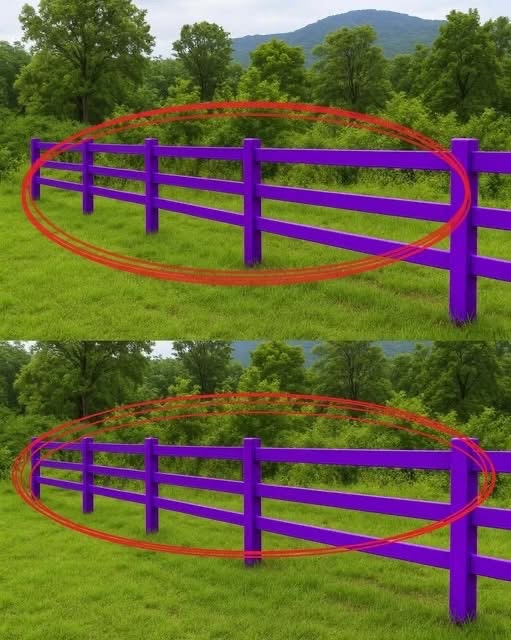
At first glance, it might seem odd—but painting fence posts or trees purple is actually a legal method of marking private property in several U.S. states. Rather than posting numerous “No Trespassing” signs, landowners can use purple paint to send a clear, lasting message: stay out. This approach is especially popular in rural or wooded areas where signs can be damaged, fall down, or simply go unnoticed.
But this isn’t just random paint—it has to follow legal guidelines to be valid. The markings must be vertical lines (not splotches or side swipes), at least one inch wide and eight inches long. These stripes are typically applied between three and five feet off the ground, making them easy to spot without being obscured by tall grass or undergrowth
There’s also a spacing rule: the purple lines should be placed approximately every 100 feet along the property boundary. This ensures that anyone walking through won’t accidentally miss the warning.
However, not every state permits this system. Some have officially adopted what’s called the “Purple Paint Law,” while others don’t recognize it at all. States like Texas, Illinois, Missouri, and North Carolina consider purple markings to be a legal stand-in for posted “No Trespassing” signs. But in places without such laws, that purple paint won’t carry legal weight—it might just confuse passersby. Always check your local statutes before relying on this method to mark your land.
Why purple? The color was chosen for good reason. It’s rare in natural settings, which makes it easy to spot. Plus, it’s durable. Unlike traditional signs that can rust, tear, or fade, paint stays put. Once applied properly, it requires little upkeep and sends a clear, unmistakable message.
So if you’re hiking, hunting, or exploring backroads and see a purple line painted on a post or tree—it’s not just for decoration. It’s a legal warning: you’re about to enter private land. In some areas, ignoring it could lead to a trespassing charge.
What looks like a simple paint stripe is actually a powerful symbol. A quiet, clear way for landowners to say: This is the line. Please don’t cross it.